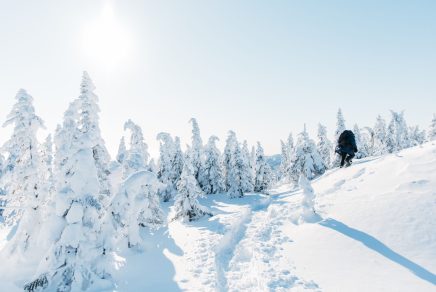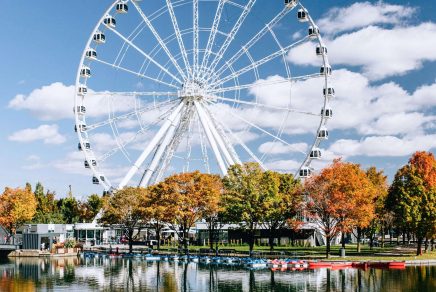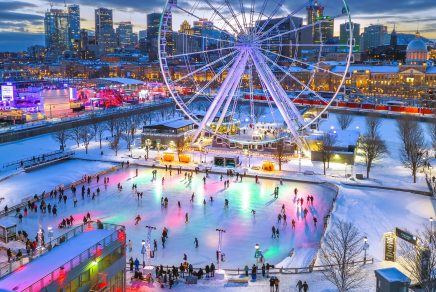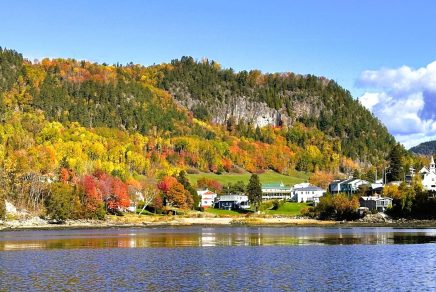Share the article
I’m at the crowded lobby of Hilton Quebec to meet Mitémo Chevalier, my guide for the Quebec Winter Carnival, or simply “Carnaval.” I’ve never met him, but he’s easy to spot: he’s decked out in a droopy red toque and a colourful sash around his waist, clutching a plastic red cane and strutting with a swagger that would shame a peacock. I imagine he’s what Bonhomme, Carnaval’s snowman ambassador, would look like if he were to melt and reveal a human form.
Once the introductions were made, Mitémo and I set off on foot to visit the Carnival. It’s the biggest winter festival in the world, with 200 activities spread throughout Quebec City and over 500,000 visitors every year. And every Canadian cliché can be found here.
Who’s the Quebec winter carnival mascot? Bonhomme Carnaval!
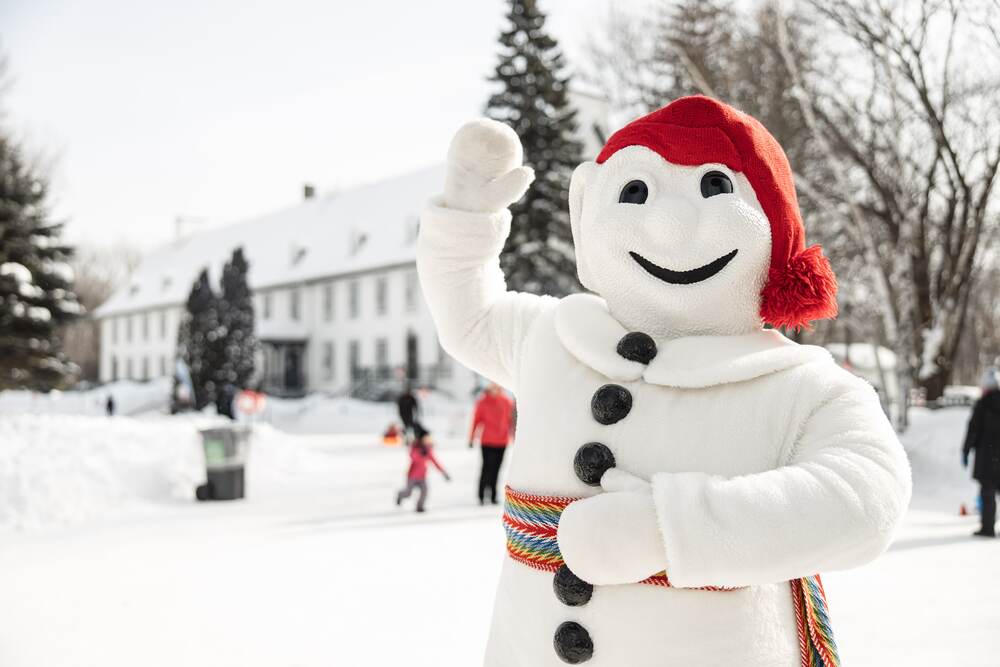
Bonhomme Carnaval, the emblematic mascot of the Québec Winter Carnival, is much more than a 7-foot tall snowman. Created by the Carnaval organizers in 1955, Bonhomme is a powerful symbol of the city, beloved by young and old alike. Wearing a red tuque and the traditional Quebec arrow sash, he’s the perfect embodiment of winter in Quebec.
He reigns over the crowds, making them laugh and encouraging their joie de vivre. He participates in almost every activity!
Beer, maple syrup, lumberjacks and canoes

Beer, maple syrup, lumberjacks, canoes: Quebec City has wrangled up all the Canadian clichés and built a sub-zero playground for them. And it’s cheeky as hell about it.
The world believes Canadians love swilling beer? Let’s knock down bowling log pins with beer kegs. We can’t live without maple syrup? Watch us clutch this syrup can at arm’s length for a ridiculously long time. We travel everywhere in canoes? Nonsense. Here, hold our maple syrup while we haul our canoes across jagged chunks of ice, then race through a river jammed with ice floes.
And if the world is convinced we’re all lumberjacks, then we’ll show them with the axe throwing challenge. This is my second axe in two days. If you ask me, Quebec City is far too generous with the axe sharing. I toss the axe at a small wooden board and miss it entirely. Again and again, plunging my illustrious lumberjack heritage deeper and deeper into shame.
Next stop: the mechanical moose. It looks deceptively slow, but after a few seconds of unnecessary shrieking and teetering from its faux-fur hide, I’m ejected from it just as awkwardly as I clambered onto it.
Drinking a shot of hot caribou
After curling and a chair race on skis, we duck into a wooden shack for a shot of hot “caribou.” Quebec City has been spiking its winters with this sweet concoction of red wine, maple syrup and hard liquor (typically whisky) for decades. It’s often served in red plastic canes topped with Bonhomme’s head. These moonlight as walking sticks for those who’ve consumed too much caribou.
Celebrating winter and Quebec folklore
Mitémo is full of these folksy pearls, and I eagerly catch them as they fall from his caribou-red-stained lips. Like the one about 19th-century French-Canadian logger Jos Montferrand, whose colourful legend tints Carnaval de Québec.
The 6 foot 4 logger travelled across the Ottawa Valley, leaving spectacular tales of his strength in his wake. Like how he once lifted a plough with one hand, or how he left his boot print in the ceiling of many Quebec taverns after performing his signature backflip.
“Winter’s just as much a part of our DNA as our past and culture,” says Mitémo, “so why wouldn’t we celebrate it?”
As I listen to Mitémo with traditional fiddle music rollicking in the background, it dawns on me that Carnaval isn’t just a festival. Like its caribou, Quebec City has concocted an intoxicating cocktail of pride, mixing history with humour in a frosty glass. And calling it Carnaval.
Essential Quebec winter travel tips
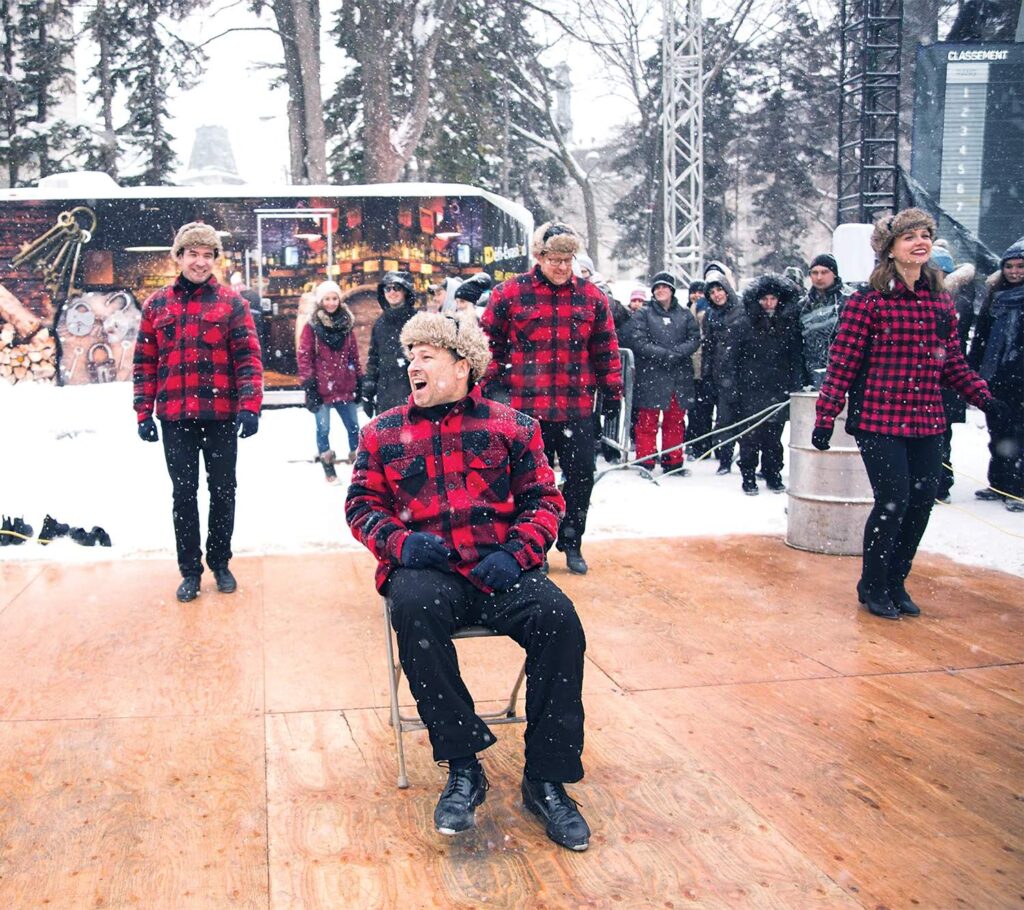
Winter transforms Quebec into a magical landscape, but making the most of everything this season has to offer requires careful planning. Here are a few practical tips.
Where does the Carnaval de Québec take place?
The carnival takes place every winter, from late January to mid-February. It’s truly a unique winter experience!
What other activities are there at Winter Carnival?
Carnival is a great excuse to enjoy the pleasures of winter and its outdoor activities for all ages. You’ll be spoilt for choice!
- Nordic swimming
- Snow tubing
- The traditional night parade with the Carnival Duchesses on the Grande Allée
- Ice sculptures
- Outdoor music shows
- Canoe races
- Ice climbing
- Dog sledding
- Even staying overnight in an ice hotel
What clothes should I bring for winter?
In Quebec, we dress ‘en pelures d’oignons’ (in onion peels). This expression means that we dress in layers of clothing to be better able to adapt to the changes in temperature. Basically, you’ll need to bring warm clothes, a waterproof and lined coat, a good pair of winter boots, gloves, a hat and a scarf. Maybe even toe warmers!
How do I drive in Quebec during the winter months?
If you’re planning to travel by car, the first thing to do is familiarize yourself with winter driving. The roads can become slippery and unpredictable.
Cover photo credit: Québec Cité

